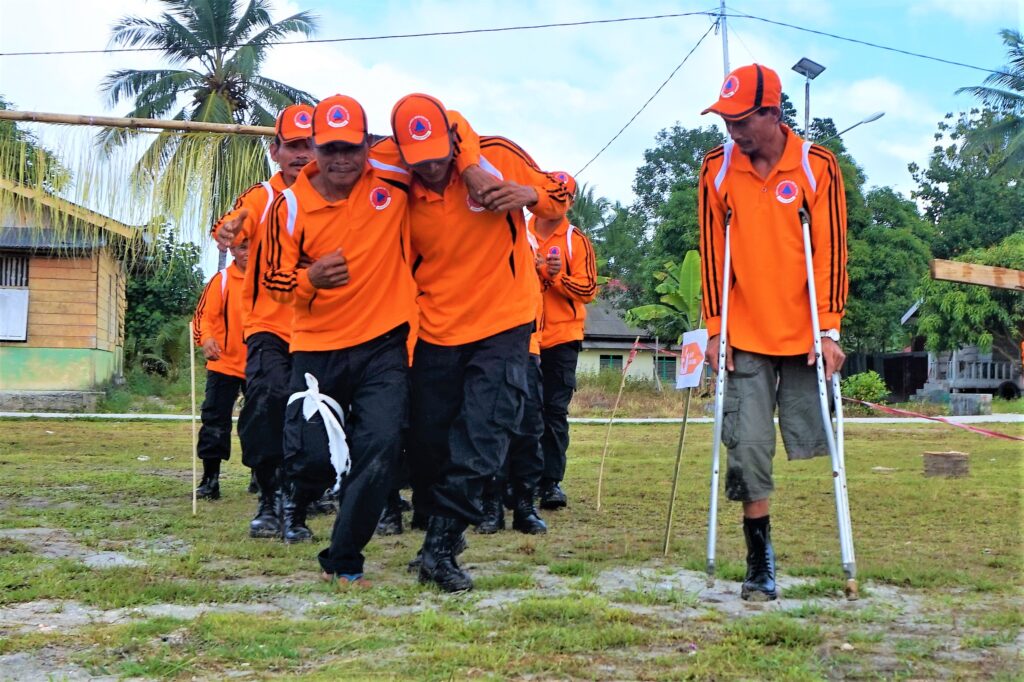ASB (Arbeiter-Samariter-Bund) is a German disaster risk reduction (DRR) and humanitarian response organisation operating across South and South-East Asia. Since 2006, ASB has been working in Indonesia, later expanding to the Philippines, Bangladesh, Nepal, and Bhutan. A co-founder of the Disability-inclusive Disaster Risk Reduction Network (DiDRRN), ASB champions disability inclusion in all areas of resilience, from DRR and climate action to humanitarian response.
We spoke with Chrysant Lily Kusumowarodyo, the Regional Director of ASB South and South-East Asia, to learn more about their journey to becoming a leader in disability-inclusive DRR and how partnerships with Organisations of Persons with Disabilities (OPDs) are helping reshape what inclusive resilience looks like in practice.
Can you introduce ASB to our network? What is your organisation’s mission, and what issues do you focus on most?
ASB (Arbeiter-Samariter-Bund) is a German DRR and humanitarian response organisation. We’ve been working in South and South-East Asia for almost two decades: in Indonesia since 2006, the Philippines since 2014, and in Bangladesh, Nepal, and Bhutan since 2017. Our mission is to make disaster risk management, socio-economic development, climate action, and humanitarian response equitable and inclusive. We’re proud to have co-founded the Disability-inclusive Disaster Risk Reduction Network (DiDRRN) in 2012, together with other like-minded organisations, to advance practice-based advocacy in DiDRR. Everything we do is guided by a strong commitment to social equity: Ensuring that persons with disabilities not only participate but lead in DRR and humanitarian processes. We believe resilience is only possible when everyone, especially the most marginalised, is included meaningfully.
How does ASB approach disaster risk reduction and humanitarian work? Are there principles or values that guide your programmes?
Our approach is built on a simple truth: effective DRR must be disability-inclusive.
This realisation came early in our journey. In 2007, during a large-scale Safe Schools programme in Indonesia, a teacher told us her blind students couldn’t access our disaster education materials. That moment changed everything. We realised that while we were promoting safety, we were unintentionally excluding some people. From then on, inclusion became non-negotiable for us.
We’ve since partnered with Organisations of Persons with Disabilities (OPDs) to ensure that inclusion is built in from the start, not added later. To guide our work, we apply what we call the “Five Inclusion Musts”:
- Identification. Work with communities and OPDs to identify and map persons with disabilities so that no one is invisible in disaster planning
- Accessibility: Remove barriers, physical, informational, and attitudinal, through inclusive early warnings, evacuation points, and communication tools
- Capacity strengthening. Build capacity and confidence of OPDs to lead through training and organisational development
- Meaningful participation. Share power and include OPDs in every stage, from design to implementation, monitoring, and policy dialogue, so they move from beneficiaries to active partners
- Rights fulfilment. Align with global frameworks like the CRPD, Sendai Framework, and SDGs to embed inclusion in laws, budgets, and governance
These principles aren’t a checklist – they’re values we live by. As we often say, “Inclusion makes DRR smarter, fairer, and more sustainable.”
